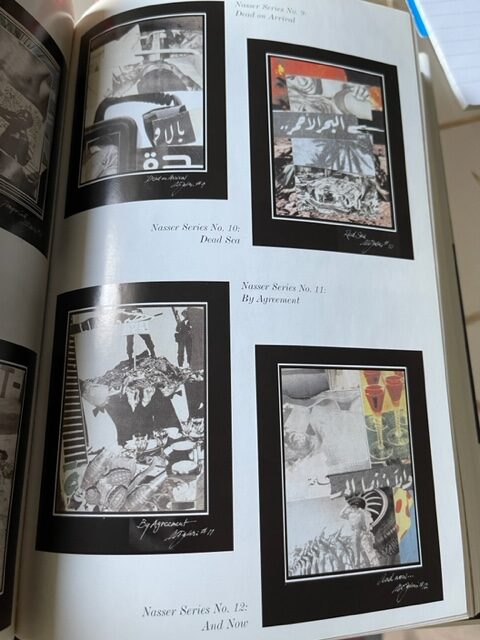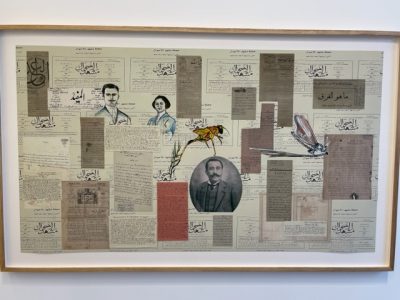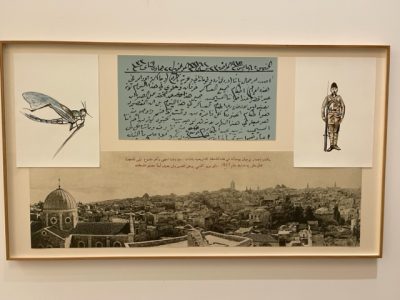Then And Now In The Levant
If there is still a Levant in 2122, will its inhabitants scour the minutiae of our lives with the same keenness we search for those of our grandparents’ times?
When we Levantines look back, we often find ourselves drawn to the dawn of the 20th century; those fateful years between 1914 and 1921 that shaped our world for the next 100 years: war and famine and pandemics and foreign conspirators reconstituting borders and nationalities and life, pretty much the way the events of 2011-2022 might very well have already begun to sketch this century.
There are vast differences between then and now, true. Yet each calamity back then has its likeness in the present, only in different shades: hunger for famine, Covid for the Spanish Flu, climate crisis for locust invasions, civil wars for a world war, local conquests for regional seizures, revolts against regimes for revolts and petitions against foreign mandates… But these are the details of pain and not the reality of it. We are experiencing different seismic jolts to the order of things, but we are experiencing them all the same.
Such details, if you want them, are the stuff of novelists and artists. The former render them through a fusion of fact and the imagination, the latter interpret them creatively in whatever combination of forms they choose. Ali Jabri, the late Syrian-Jordanian painter, was a master of such assemblages. The Nasser Series, one of his best visual essays, is a montage that summons the era of Egypt’s Jamal Abd Al Nasser and, through a medley of images, captures the essence of Arab military regimes.


The visual artist Lamia Joreig’s Uncertain Times, her current solo exhibition at Beirut’s Marfa’ Gallery, displays much larger ambitions. Hers is an epic rendition of a century-old turning point: “The period between the end of the Ottoman Empire and the beginning of the French and English mandate in Lebanon, Syria and Palestine (1914-1920).” The one that, to this day, lays siege to our Levantine sense of self and triggers pining what ifs.
Joreig’s is quite the feat. The incandescent collages that compose the nine chapters of Uncertain Times make such intimate companions of the personal and sweeping. The spectator, especially the Levantine among us, is almost sure to locate themselves in the chronicle unfolding on Marfa’s walls.
I write these words as a laywoman, of course. I am not an art critic. I respond simply as someone with a thing for history, especially at its most granular. And the granularities in Joreig’s “visual and textual correspondences” are marvelous.
In The Deadly Fall, the opening act of the first chapter, she shares the story of her grandfather, Ass’ad Dao, a lawyer and publisher of the Mashhad al Ahwal newspaper, who died after falling from a rock, which he had climbed to watch swarms of locusts about to swoop in and destroy that year’s crops. Such was the devastation from the invasion that it helped usher in the 1916 famine. With this depiction that interlaces personal tragedies with national traumas, Joreig sets the temperament and method of the ensuing chapters. Events, some obviously momentous, other seemingly small, anchor each collage, with characters entering and exiting as if a caste in a play.

Joreig’s tale, at its grandest, is an achingly familiar one: the fall of the Ottoman Empire, the advent of French and British domination, the defeat of the very short-lived Syrian Kingdom and the collapse of King Faisal ibn al Hussein’s dream, the loss of Palestine, and the birth of the Lebanese “nation” (the quotations are mine). So, it’s the intimacies that, with strategic intent, imbue the story with profound meaning and deliver it in all its delicateness and glory.


Excerpts from the diary of Ihsan Turjman, a young Palestinian soldier in the Ottoman army, find us marveling at the continuities across a century of ceaseless disruption. His question, “But what will be the fate of Palestine?” is a testimony not only to the extraordinary prescience of a 23-year-old man, but also to the manifest Palestinian identity of a beleaguered people and their land.

We Lebanese encounter perennial yearnings on the part of some of our compatriots that, oddly, have outlived every disappointment and letdown. In chapter two of Joreig’s narrative, we have the docking of the French fleet off the coast of Jounieh, in Beirut, in 1913. Apparently, ecstatic Beirutis put out quite the welcome for the fleet and Lacaze, its admiral. Upon docking, he and a coterie of dignitaries paid visits to the Saray and other sites. On one such stop, the Freres School, the admiral sat listening to the French speech of a pleading school boy “urging France to put an end to the political hardships, heeding the call of its own emotion towards Lebanon”:
Lebanon slumbers every night under the covers of the French flag. As the sun sets over the country, its rays paint the sides of the Lebanese mountains in violet and red, the sky crystalizes into a blue, and the mountaintops are crowned with eternally white snow. In this manner, Lebanon resembles the colors of the French flag–red, blue, and white…
A little over a century had passed, and there we were, in 2019, a clamorous throng receiving President Emmanuel Macron among the shards of Ashrafieh and pleading with him to save us from ourselves.
If there is still a Levant in 2122, I wonder if our diaries will still be asking, “But what will be the fate of Palestine?” I wonder if we, Lebanese, will still be awaiting yet another French rescue that is certain not to materialize? Or will the future, at least for our quandaries, finally break with the past?
Joreig’s Uncertain Times is its own creative statement about the constancies of our condition and the havoc they wreak in our collective and individual lives.
Uncertain Times is at the Marfa’ Gallery till January 27, 2022.
****
On Another Note
Enough sadness and madness, enjoy these magnificent snapshots of the World Cup.
